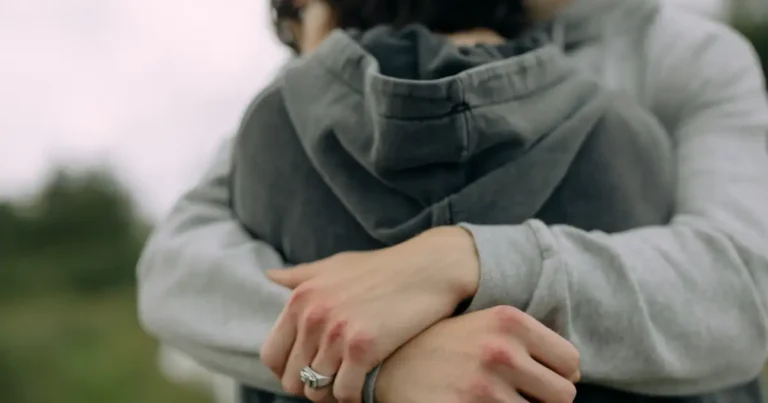Dismissive Avoidant Attachment: Cause, Traits, & Recovery

Understanding dismissive-avoidant attachment is important for anyone in relationship. It starts from early experiences where emotions weren’t understood or supported consistently. People with this style seem independent, avoid deep talks about feelings, and may pull away when things get emotional. To recover, it’s about recognizing these habits, changing negative thoughts like “I don’t need anyone,” and learning to trust and share feelings.
Therapy and supportive relationships help a lot. Healing means not just understanding yourself better but also building closer, more meaningful connections with others. It’s a journey of growth and learning to be more open and connected emotionally.
Related- Be Careful Who You Trust: 14 Clever Ideas & Quote
What Is Dismissive Avoidant Man and Woman?
Both men and women with dismissive-avoidant styles often learned to be this way. Because early on, their feelings might not have been understood or taken seriously. So, they learned to keep emotions to themselves and be self-sufficient. Here’s how it looks in men and women.
Dismissive-Avoidant Men
- These guys often seem like they don’t need anyone else. They might not talk much about their feelings or get too deep in conversations about emotions.
- They might enjoy being on their own a lot. When things get too close emotionally, they might pull away.
- They might find it hard to stick with one person long-term, feeling uneasy about depending on someone else emotionally.
Dismissive-Avoidant Women
- These women also value their independence. They might focus more on their goals than on deep emotional connections.
- They might struggle to trust others with their emotions. When things get too emotional, they might change the subject or avoid the topic.
- Like guys with this style, they might not be comfortable relying on someone else emotionally for a long time.
Understanding this can help in relationships. Because it shows how important it is to balance personal space with emotional closeness. In situation when you’re with someone who has a dismissive-avoidant style.
Dismissive Avoidant Vs. fearful Avoidant
Dismissive Avoidant Attachment Style-
- Keeps feelings to themselves.
- Values independence and self-sufficiency.
- Finds it hard to get emotionally close.
- Generally feels good about themselves.
- Often doubts others’ reliability.
- Avoids talking about personal emotions.
- Prefers to avoid conflicts.
- Solves problems on their own.
- Sets clear personal boundaries.
- Maintains a consistent emotional distance.
Fearful Avoidant Attachment Style-
- Feels torn between wanting closeness and fearing rejection.
- Shows inconsistent behavior in relationships.
- Worries about being abandoned.
- Experiences emotional ups and downs.
- Struggles with low self-esteem.
- Finds it hard to trust others.
- Reacts strongly to relationship issues.
- Seeks reassurance but may doubt it as empty promises.
- Has trouble keeping emotions stable.
- Acts unsure or conflicted in relationships.
So recognizing these styles helps understand personal relationship patterns. And improve communication with others.
Causes of Dismissive Avoidant Attachment
Dismissive avoidant attachment usually happens as a way to protect themselves. Because of things that happened in their early life or their environment. Here are ten major causes of dismissive avoidant attachment explained in deep terms.
Early Childhood Experiences
- Lack of Emotional Nurturing
Emotionally Unavailable Caregivers– If parents or caregivers don’t show enough love and care, kids might learn to keep their feelings to themselves. For example, if a child cries and their caregiver ignores them or tells them to stop. The child starts to believe that showing emotions doesn’t help and might even be bad.
Survival Mechanism– To cope with this lack of emotional support, kids might become very independent. So they avoid getting close to others to protect themselves from being hurt or rejected.
- Inconsistent Parenting
Unpredictable Caregiving– When caregivers sometimes pay attention and other times don’t, kids get confused and can’t trust that their needs will be met. For instance, if a parent is loving and caring one day and distant the next, the child learns not to rely on them.
Learning Not to Rely on Others– To avoid the pain of being let down, these kids might start to avoid relying on anyone else. So they become self-reliant and keep others at a distance to avoid disappointment.
- Trauma and Neglect
Experiences of Trauma– Children who go through trauma, like abuse. Or witnessing violence, might learn that getting close to people can be dangerous. So this makes them keep their distance emotionally to protect themselves.
Neglect– When kids are neglected and their basic emotional needs aren’t met, they learn that seeking support and closeness doesn’t work. To survive, they might start to suppress their desires for connection and become emotionally distant.
Genetic and Temperamental Factors
- Innate Temperament
Natural Independence– Some kids are naturally more independent and self-reliant. So this can make them more likely to develop a dismissive avoidant attachment style. But especially if their environment doesn’t encourage emotional closeness.
Exacerbation by Environment– If a naturally independent child grows up without much emotional support, their tendency to be self-reliant can become even stronger. So they learn to depend only on themselves.
- Hereditary Traits
Genetic Predispositions– Attachment styles can run in families. If a parent has a dismissive avoidant attachment style, their child might be more likely to develop the same style because of genetics.
Interaction with Environment– These genetic tendencies interact with the child’s environment. So a child who is genetically predisposed to be independent might become more avoidant. But if they also experience inconsistent parenting or emotional neglect.
Understanding these factors can help in addressing and possibly preventing the development of dismissive avoidant attachment. Because creating a consistent, nurturing environment and recognizing individual differences can make a big difference.
10 Clear Traits of Dismissive Avoidant Attachment
Recognizing the traits of dismissive-avoidant attachment is important for understanding how people approach relationships. These traits show behaviors where independence is valued more than emotional closeness.
1) Emotional Distance and Detachment
- People with dismissive avoidant attachment often keep their emotions at a distance in relationships.
- They might seem aloof or indifferent to others’ emotions.
- They restrain themselves from expressing their own feelings and might avoid emotional topics.
- During emotional moments, they may withdraw physically or create space.
2) Emphasis on Independence and Self-Sufficiency
- They value being independent and self-reliant, preferring to handle challenges alone.
- Fear of depending on others emotionally drives them to avoid relying on others.
- So they take pride in managing their lives without needing much emotional support.
- Sharing personal vulnerabilities feels uncomfortable as they see it as a sign of weakness.
3) Challenges with Intimacy and Emotional Connection
- They find it hard to form deep emotional bonds and maintain intimacy.
- Sharing personal feelings that could lead to deeper connections is often avoided.
- Fear of getting hurt or rejected makes them cautious about emotional closeness.
- So their skepticism about others’ intentions makes it difficult to open up emotionally.
4) Suppression and Minimization of Emotions
- They tend to keep their emotions under control, even in emotional situations.
- So they downplay their own feelings, sometimes seeing them as unimportant.
- Suppressing emotions helps them maintain emotional stability and avoid risks.
- So their limited emotional expression can make it hard for them to connect with others.
5) Fear and Reluctance Towards Dependency
- They fear becoming emotionally dependent on others.
- They actively avoid situations where they might need emotional support or validation.
- Independence serves as a shield against potential emotional pain or disappointment.
- So they view relying on others emotionally as a threat to their sense of identity and control.
6) Difficulty Trusting Others
- People with dismissive avoidant attachment often struggle to trust others because they are cautious and skeptical about people’s intentions.
- Past experiences of feeling betrayed or let down can make them hesitant to open up emotionally.
- They find it hard to share personal thoughts or feelings, fearing they might be vulnerable or rejected.
- They prefer to handle problems on their own rather than rely on others. Which helps them protect themselves from emotional harm.
7) Communication Style (Logic and Objectivity)
- Those with dismissive avoidant attachment tend to communicate in a way that focuses on facts and practicality rather than emotions.
- They prefer clear and direct communication that addresses practical matters.
- They may struggle to express or understand emotional cues, which can make them seem emotionally distant.
- When emotional topics come up, they might avoid these discussions and stick to a rational approach.
Related- Giving Someone the Silent Treatment Speaks Volumes About Your Character
8) Approach to Problem-Solving and Decision-Making
- They approach problems and decisions with a logical mindset, weighing the pros and cons objectively.
- Efficiency is important to them, so they prioritize finding quick and effective solutions, often minimizing emotional aspects.
- They prefer to handle issues independently rather than seeking advice or support from others.
- Achieving goals is their focus, sometimes overlooking emotional or relationship impacts in their pursuit of outcomes.
9) Struggles with Emotional Support and Vulnerability
- Individuals with dismissive avoidant attachment often find it challenging to provide emotional support to others.
- They may avoid situations where they need to express emotional care or show vulnerability themselves.
- Independence is crucial to them, and they may see relying on others for support as a weakness.
- They fear that revealing their vulnerabilities could lead to rejection or abandonment, reinforcing their self-reliance.
10) Impact on Relationships and Perceptions
- These traits shape how dismissive avoidant individuals behave in relationships, often leading others to see them as emotionally unavailable.
- So they may engage in relationships that stay superficial or lack deep emotional connection.
- Others might misunderstand their reserved communication style and emotional restraint as distance or lack of interest.
- So their reluctance to trust and open up emotionally can create barriers to forming close bonds, impacting the quality and longevity of their relationships.
Related- Signs You’re Not Really In Love: 15 Clear of Love Lost
8 Steps to Recovery From a Dismissive Avoidant Attachment Style
Recovering from a dismissive-avoidant attachment style means understanding where it comes from and how it affects relationships. So here’s what it involves:
1- Understanding Where It Comes From
Dismissive-avoidant attachment starts from early experiences where emotions weren’t fully understood or accepted. So people with this style learned to keep emotions to themselves and rely on independence.
2- Recognizing How You Act
If you have dismissive-avoidant attachment, you might seem independent and find it hard to talk about deeper feelings. So you might pull away when things get too close emotionally.
3- Changing Negative Thoughts
Healing means challenging thoughts like “I don’t need anyone” or “Emotions are a weakness.” So it’s about learning that vulnerability and connection are okay and important.
4- Learning About Yourself
Getting better involves understanding what triggers your emotions and learning how to handle them in a healthy way.
5- Building Trust and Being Open
Healing also means learning to trust others and yourself with emotions. So it’s about gradually opening up and letting people in.
6- Getting Support
Therapy, especially focused on attachment, can really help. So it gives a safe place to talk about your attachment style, learn new ways to relate, and deal with old emotional hurts.
7- Making Better Relationships
As you heal, you can start to build relationships based on trust, respect, and sharing feelings. This means setting boundaries, being honest, and growing closer emotionally.
8- Growing and Learning
Healing from dismissive-avoidant attachment is a journey of learning about yourself and how to connect better with others. So it’s about being patient, celebrating progress, and staying open to learning new ways to relate.
By taking these 8 steps, you can heal from dismissive-avoidant attachment and find deeper connections in your relationships.


